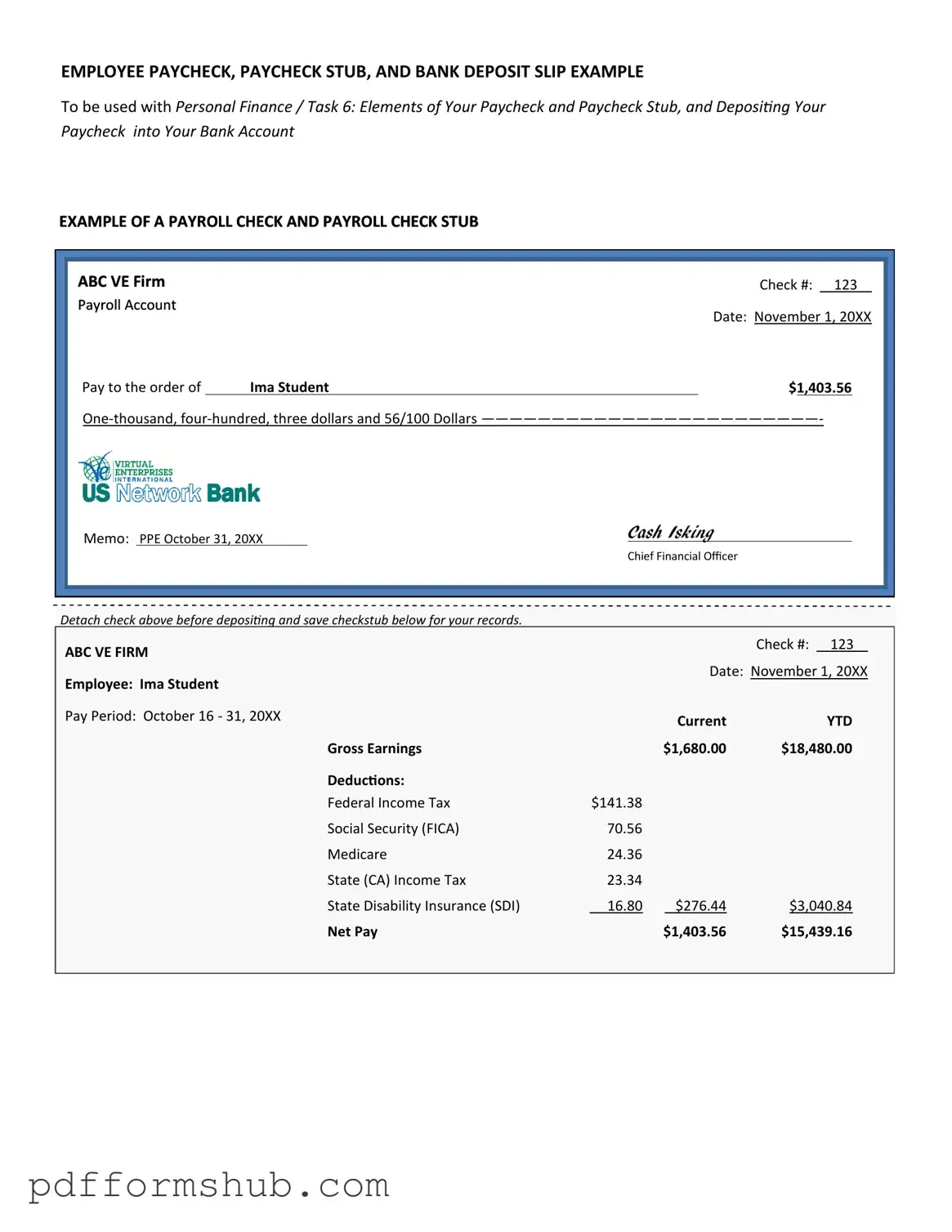The Payroll Check form serves as a crucial document in the realm of employee compensation, encapsulating essential information that facilitates the accurate disbursement of wages. Typically, this form includes the employee's name, identification number, and the specific pay period for which the wages are being issued. Additionally, it outlines the gross pay, deductions, and net pay, providing a clear breakdown of the amounts involved. Employers often utilize this form to ensure compliance with tax regulations and to maintain accurate records for both the organization and the employee. Furthermore, the Payroll Check form may also contain fields for signatures, which serve as verification of the transaction, ensuring that both parties acknowledge the payment details. Understanding the components of this form is vital for both employers and employees, as it not only represents a financial transaction but also reflects the broader relationship between work and compensation.
